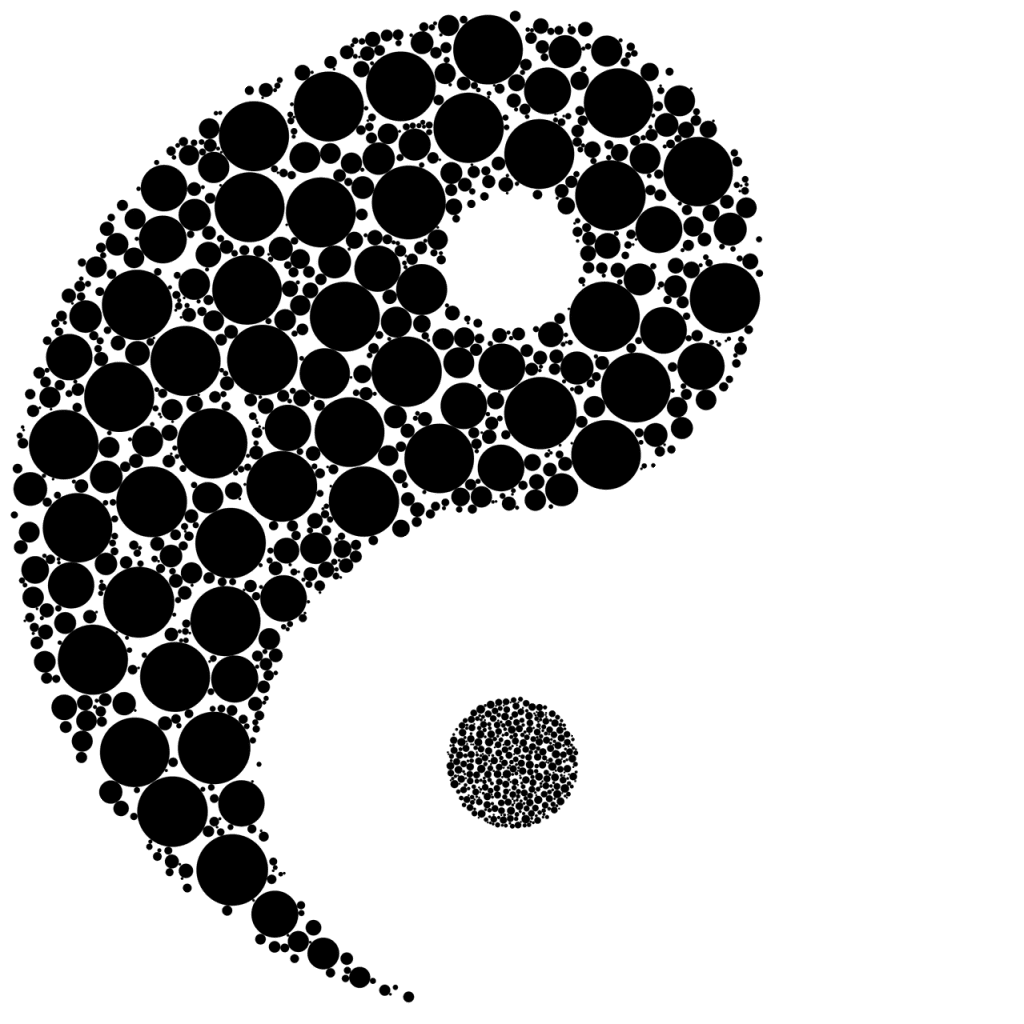
The Middle Way is about balance but is not as simple as adjusting weights until they are equal and then you are done. This is because the weights themselves are not constant, so, you need to pay attention to how they shift in quality.
In other words, it is less like linear pendulum oscillation, and more like a spinning disc. Fine adjustments allow you to more completely meet your needs and priorities by optimizing where you concentrate your time.
Needs and the Middle Way
Your fundamental needs do not change that much. What changes as you move beyond childhood, is the extent to which they are your personal responsibility. We often do not pay them much attention until one is neglected and we feel its absence. As long as a certain level of safe shelter, available resource, community, accomplishment, and inner evolution is occurring, all is well.
However, it is easy to see what happens if our environmental temperature becomes hazardous. Or, perhaps if we experience a restriction of food or water. What is less obvious is the physiological reaction to solitude and isolation. Or even to stagnation in achievement.
Our needs relate to the environment with which we surround ourselves. They depend on career choices, family commitments, financial pressures, and health issues. And, these may need overhauling from time to time. Consequently, it is up to you to find the sweet spot where you experience harmony by choosing what is required and eliminating what is not.
Applying the Middle Way means bringing attention to 1) Where you do and don’t need to go. 2) How you do and don’t need to feel. And, as well, 3) What you do and don’t need to think.
Priorities and the Middle Way
As a person transitions into adulthood and beyond, things deemed to be the most important shift. Values change as you enter into intimate relationships and take on additional responsibilities. Also, as you become more involved in your personal community, objectives may shift to being more about the development of others and less about your personal gain.
For this reason, it is important to reevaluate your values occasionally. Maintain your equilibrium through awareness of the most critical factors in your life. Your Middle Way follows from putting into action the behaviors that you have control over to meet these critical factors.
Time and the Middle Way
Balance across the many domains of your life, such as family, work, health, environment, finance, social community, personal development, and recreation cannot be obtained by simply affording them equal time. How you handle the weight of each element depends partly on managing your time to contribute to each one. It may be possible to use time efficiently in one area. Perhaps it comes more naturally to you or is more easily supported by your life circumstances. Adopting the Middle Way is about having awareness of where your time is spent and where it is most useful.
So how do you focus your energy and manage yourself through time according to your needs and priorities? It depends on your understanding of the circumstance and how it can be a force for good or can detract from good.
You can advance your comprehension by considering the merits of your thoughts and emotions and how they serve. Furthermore, you can also consider there application in what you say and do. This includes what you pursue to survive and make money.
This means step one is understanding your inner workings, strengths, weaknesses, and purpose.
Step two is applying this knowledge so that you can regulate your time and effort to fully meet your needs and priorities.
Overall, developing your Middle Way increases your concentration, focus, and self-trust. It brings renewed purpose and guides choices for ultimate success.
Witnessing your Self-talk
You can actively take steps to increase awareness of your self-talk, emotional responses, and the behaviors you implement by reflecting on the following questions:
1) How do your thinking and associated attitudes promote positive outcomes?
2) How does your emotional framework allow for growth?
3) How do the actions you select bring forth the best possibilities?
4) How do your thoughts and associated attitudes diminish less favorable outcomes?
5) How does your emotional framework prevent stagnation?
6) How do the actions you select limit negative results
Image by Gordon Johnson from Pixabay